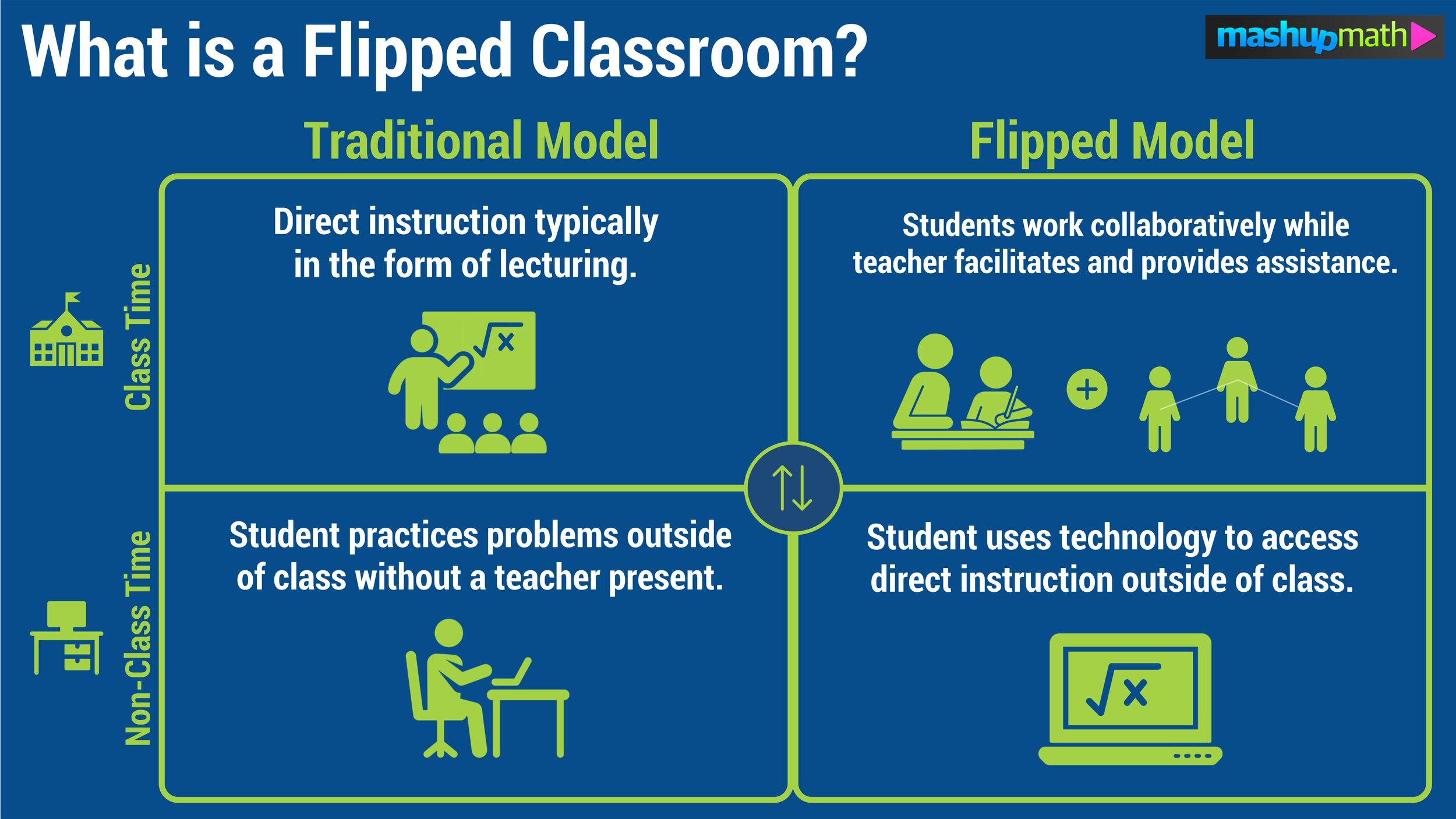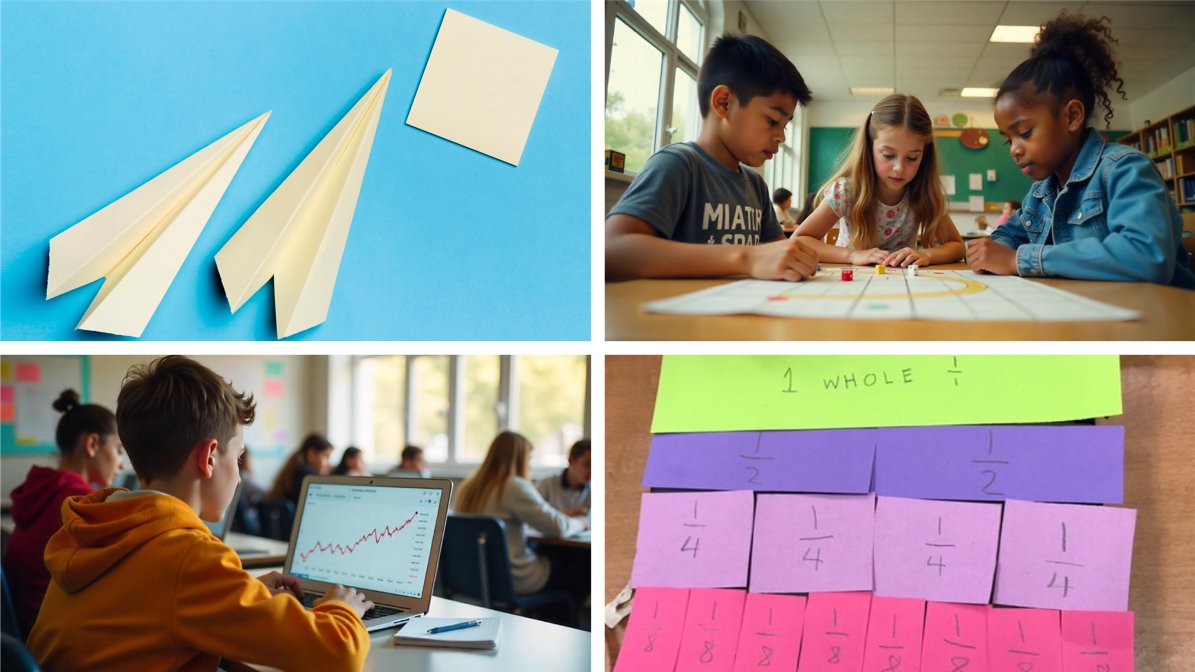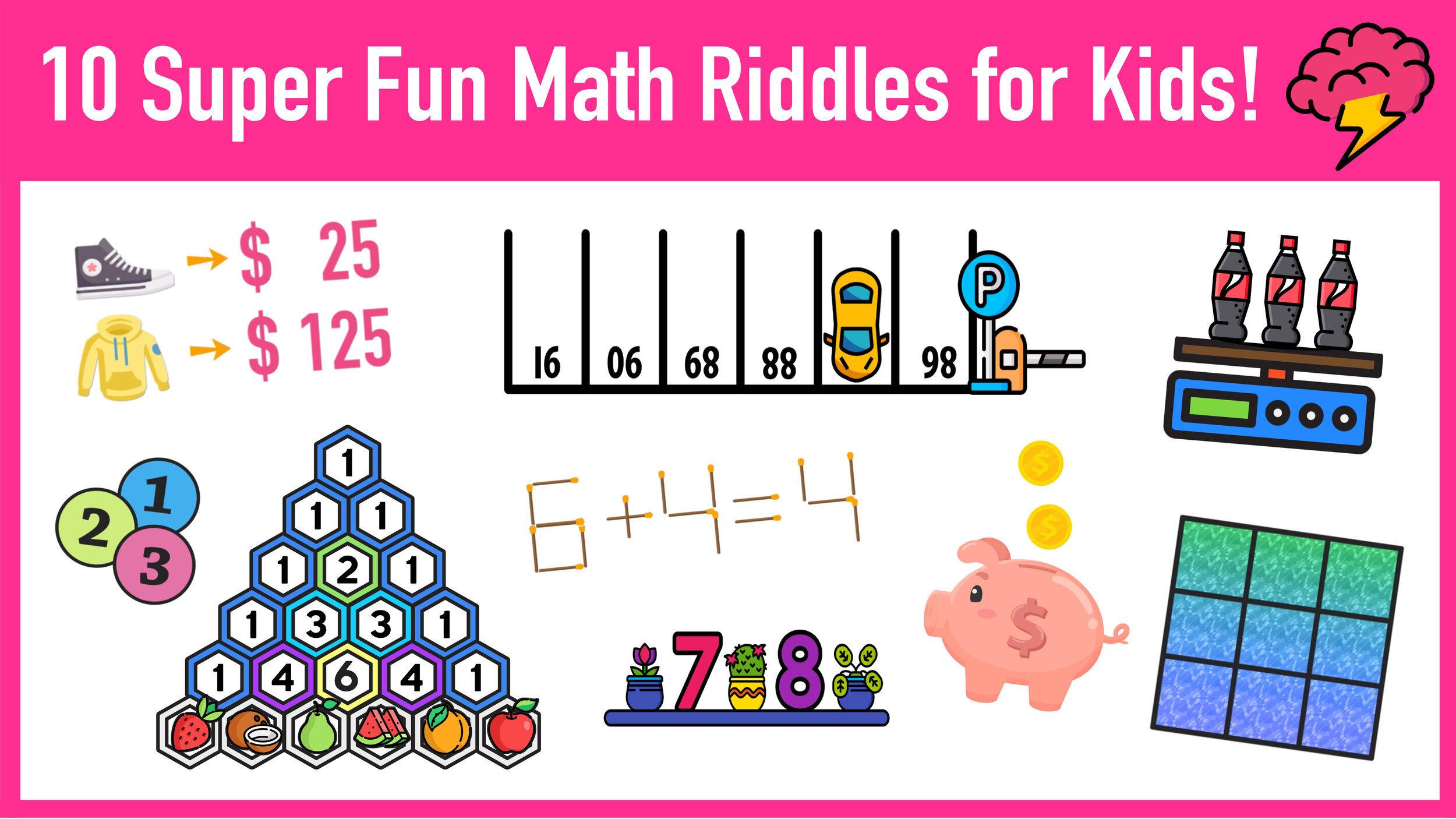What is a Flipped Classroom?
How to use the flipped classroom model to boost learning outcomes, motivation and engagement
What is a flipped classroom? In a flipped classroom, teachers facilitate collaboration and provide small group instruction instead of lecturing. (Image: Mashup Math via Getty)
An effective teacher should not be a sage on a stage, but a guide on the side. -Alice King
In the traditional classroom model, students typically spend the majority of their class time passively observing direct instruction and taking notes. Under this model, students typically have to wait until class is over to apply what they have learned to solving actual problems (usually in the form of homework assignments).
Conversely, the flipped classroom model reverses the traditional model in that students use technology to access direct instruction outside of the classroom and then spend class time working on practice problems and activities that require higher-level thinking, all while a teacher is present to facilitate and answer questions as they arise.
The flipped classroom model is built around the idea that class time—when a teacher is present—should focus on applying skills and working through problems (active learning), while direct instruction should be accessed outside of class time (passive learning).
What is a flipped classroom?
The flipped classroom model—which is driven by students watching a video lesson or slideshow presentation for homework and then spending the bulk of class time working on problems and activities—is transforming the role of a teacher in the 21st Century.
Additional benefits of the flipped model include more time for activities and collaboration, students being able to work at their own pace, and teachers getting to actually teach rather than delivering a prepared lecture over and over again.
The Flipped Classroom Model vs. The Traditional Classroom Model
Given the pros of the flipped classroom model—namely giving students more time to apply what they are learning to solving complex problems under the guidance of a teacher—you may be wondering how you can incorporate this style of instruction into your classroom.
First, it is important that you acknowledge that any teacher can successfully implement the flipped classroom model to some degree.
Are you ready to make the flip?
Getting Started with the Flipped Classroom Model
Flipped Classroom Motivation and Engagement: Students use technology to access direct instruction outside of the classroom. (Photo by Thomas Park on Unsplash)
If you are intrigued by the potential of flipping but are struggling with the anxiety of taking on the challenge or simply can’t figure out where to start—it’s easier and more doable than you think!
While the following tips do not encompass every aspect of effectively flipping your classroom, they will help you to overcome some of the fears and start you on the path to shifting the focus in your classroom from teaching to learning!
1.) You're Not Alone
Flipping your classroom can be intimidating and it’s important to remember that you are not in this alone. When you begin to experiment with the flipped classroom model, let your fellow teachers, administrators, students and their parents know what you are doing and, more importantly, why you decided to do it. People will be more supportive of your endeavor and more accommodating of any missteps if they know that your intention is to create a learning environment that is better suited to meet the unique needs of every student.
2.) Expect Some Resistance
Change can be challenging. You need to prepare yourself for resistance from students and parents who are devoted to traditional models of instruction. Such resistance can be overcome by informing students and parents why you have chosen to implement a flipped classroom model and how it can enrich the educational experience. The first few weeks of flipping may be shaky, but your commitment will pay off in the long run, as early resistors often become ardent supporters once they see concrete results.
Teachers often encounter some initial resistance when they first start implementing the flipped classroom model. (Photo by Thomas Park on Unsplash)
3.) Start Small
Teachers often avoid the flipped classroom model in fear of the time, effort, and energy it takes to completely transform all of their materials and lesson plans. For anyone who shares this feeling, here’s some good news—you can start small and flip only one unit or even just one lesson! Think about a unit or concept that is particularly difficult to teach and consider flipping only those lessons. If the experience is positive, then you can continue to flip future lessons as you move through the school year.
4.) Take Advantage of YouTube
Another source of anxiety for those who are considering flipping their classroom is the demand for creating video content. Many teachers either lack the time or are simply not comfortable with filming and editing video. Luckily, there are tons of high-quality and standard-based video lessons that can be accessed for free on YouTube. Some awesome examples include Mashup Math, ASAP Science, and National Geographic.
5.) Use Some Tools
As the flipped classroom model becomes more popular, more tech companies are producing apps and software that is specifically designed to make the flipped classroom easier for educators. One particular application, WeVideo, is a simple, yet powerful, platform that allows teachers and students to create engaging educational videos. Adobe Spark is another effective video-creation app. Similar to Microsoft PowerPoint, you can use simple drag-and-drop skills to create captivating video lessons from your desktop computer or mobile phone.
6.) Use Student Feedback
If you're flipping for the first time, then prepare to make mistakes…lots of them! Plan time to debrief with students and to collect feedback. Implementing an experimental model will require frequent course corrections and student feedback will be valuable. Effective flippers have regular debriefing sessions with students to formatively assess their experiences and to dictate future instruction.
7.) Embrace the Challenge
Flipping your classroom will be a challenge and you can count on a few missteps along the way, but that doesn’t mean it’s not worth the effort! Remember that flipping your classroom is not about technology; it’s about transforming education and redefining the role of the teacher. Becoming a flipped educator will not diminish your role as an educator—it will enhance it.
And your students will reap the benefits of a superior learning experience, while you may just rediscover your love of teaching at the same time.
Effective flipped classroom teachers make time to debrief with students and to collect valuable feedback. (Image: Mashup Math MJ)
Flipped Classroom Motivation and Engagement
On a final note, the topic of how the flipped classroom model affects student motivation and engagement should not be ignored.
Recent studies support the idea of a flipped classroom motivation and engagement boost amongst students. (Image: Mashup Math MJ)
In fact, many schools adopt the flipped classroom model as a means of motivating and engaging struggling students who are underserved by traditional instruction methods. It is not surprising why many school improvement plans adopt some form of the flipped classroom model.
As more classrooms flip, more data is becoming available on the effectiveness of the flipped classroom model.
A recent study has concluded that, under the flipped classroom model, students across all grade levels were significantly more engaged throughout their courses with a continuously increasing trend, and that the previously lowest performing students had the largest percentage of improvement.
So, if you are looking to take advantage of the flipped classroom motivation and engagement boost and try a new way to reaching your students, the flipped classroom model.















